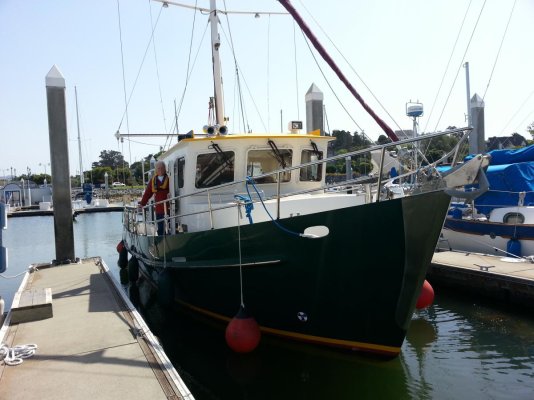jhance
Senior Member
To all Camano owners: what is your preferred method to getting off a dock with the wind blowing you against the dock? Seems the bow thruster is only good up to maybe 10 knots of wind or so. When wind is blowing more than this the only way I can get off the dock in linear moorage is pivoting with a spring line off the bow to the dock so the stern kicks into the wind, then back out.




